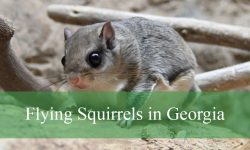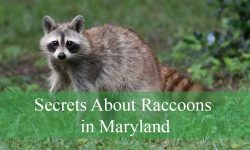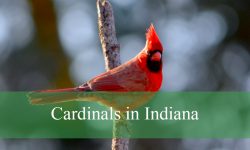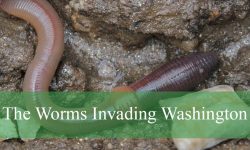When dawn breaks over Florida’s marshlands, the mist rises, the sunlight turns golden, and a tall, graceful figure appears—standing still as a statue among the reeds. With long legs, a dagger-like bill, and unmatched poise, the heron is one of the most striking birds found in Florida’s wetlands.
These birds are not just icons of beauty—they are keystone species in one of America’s most complex ecosystems. Whether stalking prey in the Everglades, nesting in coastal mangroves, or gliding silently over freshwater marshes, herons play a vital role in maintaining ecological balance.
In this article, we’ll uncover the truth about herons in Florida’s marshlands—their species diversity, behavior, feeding habits, nesting rituals, and the surprising ways they adapt to both nature and human presence.
Florida: A Heron Paradise
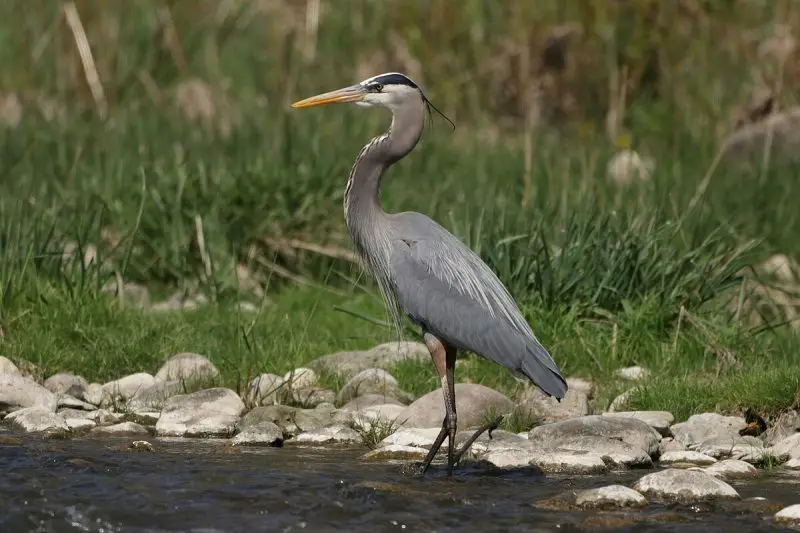
Why Florida Marshlands Are Perfect for Herons
Florida’s unique combination of freshwater wetlands, mangroves, estuaries, and coastal lagoons creates a year-round haven for herons. The abundance of fish, amphibians, and invertebrates provides endless feeding opportunities, while the mild climate supports breeding throughout the year.
From the Everglades National Park to St. Johns River Marsh, Lake Okeechobee, and Apalachicola Bay, herons thrive in every corner of the state.
Common Heron Species in Florida
There are over seven species of herons regularly seen in Florida’s marshes:
- Great Blue Heron (Ardea herodias) – The largest and most recognizable, often seen wading in shallow water.
- Tricolored Heron (Egretta tricolor) – Sleek and active, found along estuaries and marsh edges.
- Little Blue Heron (Egretta caerulea) – Smaller and more secretive, with slate-blue plumage.
- Green Heron (Butorides virescens) – Compact and clever, known for using tools to catch fish.
- Black-crowned Night Heron (Nycticorax nycticorax) – Nocturnal feeders with red eyes and short necks.
- Yellow-crowned Night Heron (Nyctanassa violacea) – Crab-hunting specialists of coastal wetlands.
- Great Egret (Ardea alba) – Though technically an egret, it belongs to the heron family and is a common sight in Florida.
Each species fills a unique niche within the state’s marsh ecosystem, creating an intricate balance that supports both predator and prey.
The Great Blue Heron: The Giant of the Marsh
No discussion of Florida herons is complete without the Great Blue Heron, the largest and most widespread of all. Standing nearly 4 feet tall with a wingspan over 6 feet, this majestic bird dominates the shallow waters of Florida’s wetlands.
Appearance and Behavior
Despite its name, the Great Blue Heron is a mix of blue-gray, black, and chestnut hues. Its slow, deliberate movements mask lightning-fast reflexes when striking prey.
The heron’s patience is unmatched—it can stand motionless for minutes, waiting for the perfect moment to spear fish, frogs, or even small snakes.
Adaptability
Great Blue Herons are found everywhere—from remote marshes to suburban golf course ponds. Their adaptability to human-altered environments is a key reason for their success across Florida.
Feeding Secrets: Precision and Patience
Hunting Technique
All herons are expert hunters. Their method combines stillness, stealth, and precision. Using their long necks as a spring mechanism, they strike with incredible speed, spearing or grabbing prey with their sharp bills.
Their diet includes:
- Small fish (their favorite food)
- Frogs, snakes, and lizards
- Crustaceans and insects
- Occasionally small rodents or birds
Unique Adaptations for Feeding
- Neck Vertebrae Flexibility: The “S-shaped” neck allows a sudden whip-like strike.
- Forward-Facing Eyes: Give binocular vision for precise targeting.
- Toes and Long Legs: Help them wade through mud and water without sinking.
- Silent Flight: Enables stealth approaches to feeding grounds.
Herons and Water Levels
Florida’s fluctuating water levels—from seasonal rains to dry spells—affect heron feeding patterns. When water levels drop, fish concentrate in smaller pools, making hunting easier. During floods, herons expand their territory in search of food.
Nesting and Breeding in Florida
Courtship Displays
Heron courtship is one of the most elegant rituals in the bird world. Males perform elaborate displays—stretching their necks, fanning their plumes, and clattering their bills—to attract mates.
In Florida, courtship often peaks in late winter and early spring, though many species can breed year-round due to the warm climate.
Building the Nest
Herons prefer nesting in colonies called rookeries, often shared with egrets, ibises, and anhingas. Nests are built high in trees near water using sticks and reeds.
The female lays 2 to 5 eggs, which both parents incubate for about 25 days. After hatching, both share feeding duties, regurgitating partially digested fish for the chicks.
Raising the Young
Chicks grow quickly, leaving the nest after 7–8 weeks. However, juvenile mortality can be high due to storms, predation, or competition among siblings.
In protected marshlands such as Wakodahatchee Wetlands and Corkscrew Swamp Sanctuary, heron rookeries provide spectacular sights during breeding season.
The Role of Herons in Florida’s Ecosystem
Balancing Aquatic Populations
As top-level predators, herons regulate fish and amphibian populations. By targeting weak or diseased prey, they help maintain the overall health of aquatic ecosystems.
Food Source for Predators
Herons themselves are prey for larger animals, especially when young. Predators include alligators, raccoons, eagles, and owls.
Ecological Indicators
Because herons are sensitive to pollution and habitat changes, their population trends act as indicators of environmental health. A decline in heron nesting can signal contamination or wetland degradation.
The Hidden Challenges Facing Florida’s Herons
Habitat Loss
Florida has lost millions of acres of wetlands to urbanization, agriculture, and development. Coastal marshes and inland wetlands—critical for heron feeding and nesting—are among the most threatened ecosystems in the state.
Water Pollution
Nutrient runoff from farms and residential areas leads to algal blooms that deplete oxygen, harming fish populations and making hunting difficult for herons.
Climate Change and Rising Seas
Rising sea levels threaten to submerge low-lying nesting areas. Saltwater intrusion also alters the freshwater balance in marshes, changing the composition of plant and fish species herons rely on.
Human Disturbance
Tourism and recreation in wetland areas can disturb nesting colonies. Herons are easily stressed and may abandon nests if repeatedly disturbed during breeding season.
Surprising Behaviors You Didn’t Expect
1. Herons Can Swallow Large Prey Whole
Herons are known to swallow fish longer than their own necks, and sometimes even small snakes or rodents. Their expandable throats allow them to consume surprisingly large meals.
2. They Hunt at Night
Species like the Black-crowned and Yellow-crowned Night Herons are nocturnal hunters, using moonlight to stalk crabs and shrimp along tidal flats.
3. They Use Tools
The Green Heron is one of the few bird species known to use tools. It drops twigs, insects, or feathers on the water’s surface to lure fish—a remarkable display of intelligence.
4. They’re Territorial
During nesting, males defend territories aggressively, chasing away rivals and even other bird species.
5. They Can Live for Decades
In the wild, herons can live up to 15–20 years, and banding studies in Florida have recorded individuals surviving over two decades.
Famous Heron Habitats in Florida
1. The Everglades National Park
The Everglades host one of the largest heron populations in North America. Great Blue Herons and Tricolored Herons dominate the sawgrass prairies, while Night Herons hunt along mangrove shorelines.
2. Merritt Island National Wildlife Refuge
Located near Cape Canaveral, this refuge provides prime habitat for nesting herons and egrets. The Black Point Wildlife Drive offers excellent viewing opportunities year-round.
3. Corkscrew Swamp Sanctuary
This Audubon-managed sanctuary near Naples is home to diverse heron species and one of Florida’s most active rookeries during spring.
4. St. Marks National Wildlife Refuge
Spanning over 70,000 acres, this refuge features tidal marshes and freshwater pools where herons thrive alongside ibises and spoonbills.
Conservation Efforts and Protection
Legal Protections
All herons in Florida are protected under the Migratory Bird Treaty Act. This law prohibits hunting, capturing, or disturbing nesting birds.
Additionally, state and federal agencies actively restore wetlands, replant mangroves, and regulate water management to maintain healthy marsh systems.
The Role of Organizations
Groups like Audubon Florida, The Nature Conservancy, and Florida Fish and Wildlife Conservation Commission (FWC) conduct research, manage rookeries, and promote education to protect herons and their habitats.
Citizen Involvement
Residents and tourists can help by:
- Avoiding rookeries during nesting season.
- Supporting wetland preservation initiatives.
- Reducing fertilizer use to minimize runoff.
- Participating in local bird counts and conservation programs.
Myths and Misconceptions About Herons
Myth |
Truth |
|---|---|
Herons only eat fish. |
False. They also eat frogs, insects, crustaceans, and rodents. |
All herons migrate in winter. |
False. Many species remain in Florida year-round. |
They damage fish populations. |
False. They usually target small, abundant fish and help balance ecosystems. |
Herons can’t live near cities. |
False. They adapt to suburban lakes and golf courses. |
All white herons are egrets. |
False. Some herons, like the Great White Heron, are simply color morphs of the Great Blue Heron. |
Amazing Facts About Florida’s Herons
- Herons can fly up to 30 miles per hour despite their large size.
- Their feathers are waterproof, thanks to oil secretions from a special gland.
- Juvenile herons are duller in color, helping them blend into their surroundings.
- The Great White Heron found in South Florida is considered a subspecies of the Great Blue Heron.
- Tricolored Herons are among the most active hunters, often chasing prey through shallow water rather than waiting still.
- Herons often reuse nests, adding new materials each year until the structure becomes several feet wide.
- Their knees bend backward, giving them stability in deep mud.
- Herons have been depicted in ancient Egyptian and Native American art as symbols of creation and renewal.
FAQs About Herons in Florida Marshlands
Are herons common in Florida?
Yes. Florida’s wetlands are home to several species of herons, and they can be seen year-round across the state.
What do herons eat most in Florida?
Their diet mainly consists of small fish, frogs, crustaceans, and insects found in marshes and shallow waters.
Do herons migrate out of Florida?
Some northern populations migrate, but most of Florida’s herons are permanent residents.
Are herons endangered?
Most are not, but their habitats are under threat. Conservation efforts are crucial to maintain their populations.
Where can I see herons in the wild?
Visit the Everglades, Merritt Island Refuge, or local wetlands like Green Cay and Wakodahatchee for excellent heron viewing.
Conclusion
The truth about herons in Florida’s marshlands is that they are more than elegant silhouettes against sunrise—they are living symbols of balance, patience, and survival. These magnificent birds connect land and water, predator and prey, and humans with nature.
From the towering Great Blue Heron to the nimble Tricolored Heron, each plays a crucial role in Florida’s fragile wetland ecosystem. Yet their continued survival depends on our commitment to protecting the marshes they call home.
So, next time you wander through a Florida wetland, pause and watch. Somewhere among the cattails, a heron stands silently, teaching us that beauty, grace, and resilience are the true foundations of nature’s truth.

